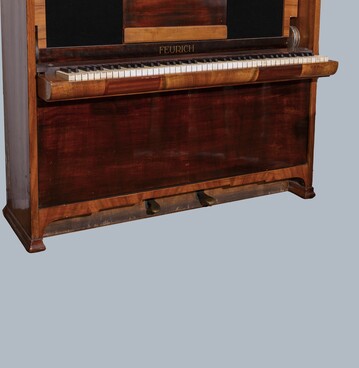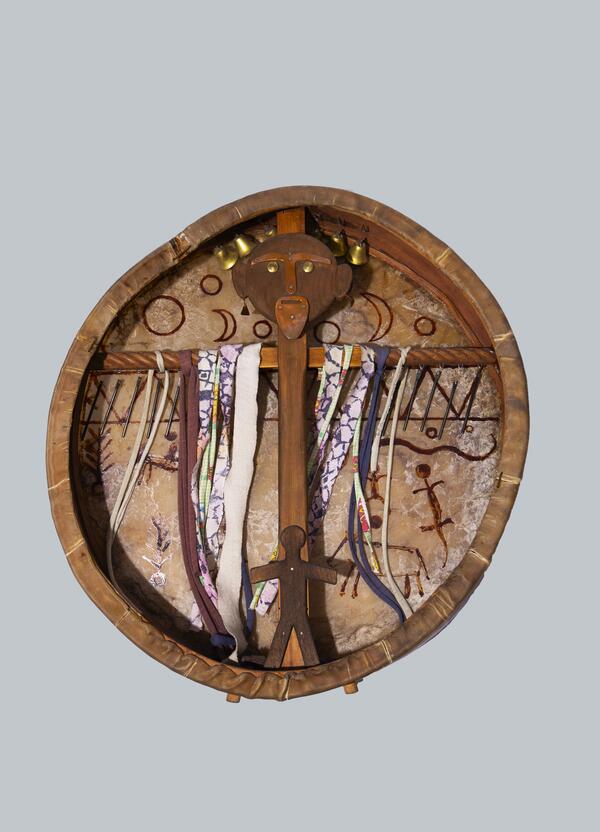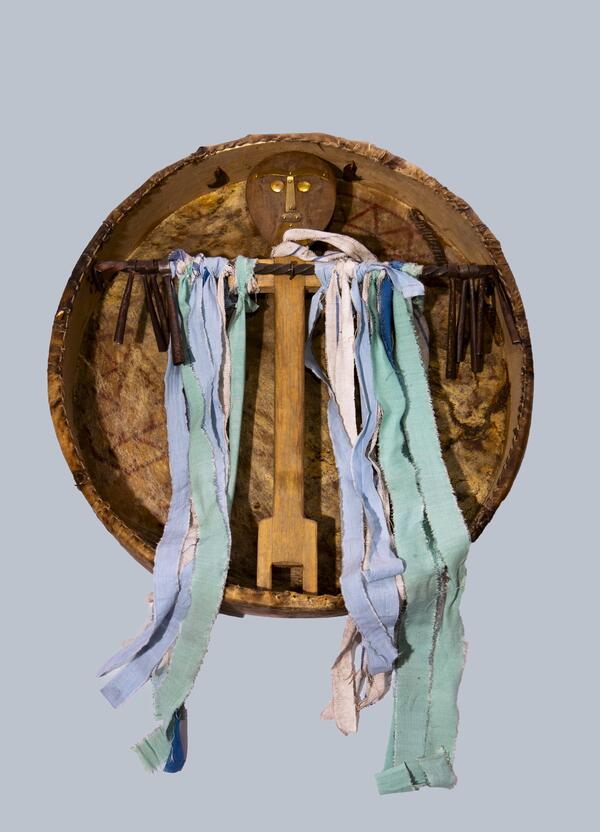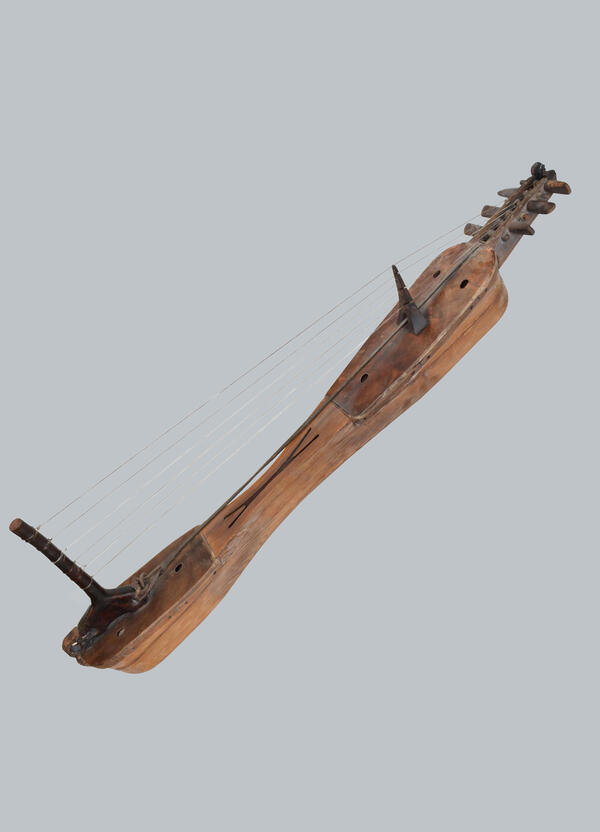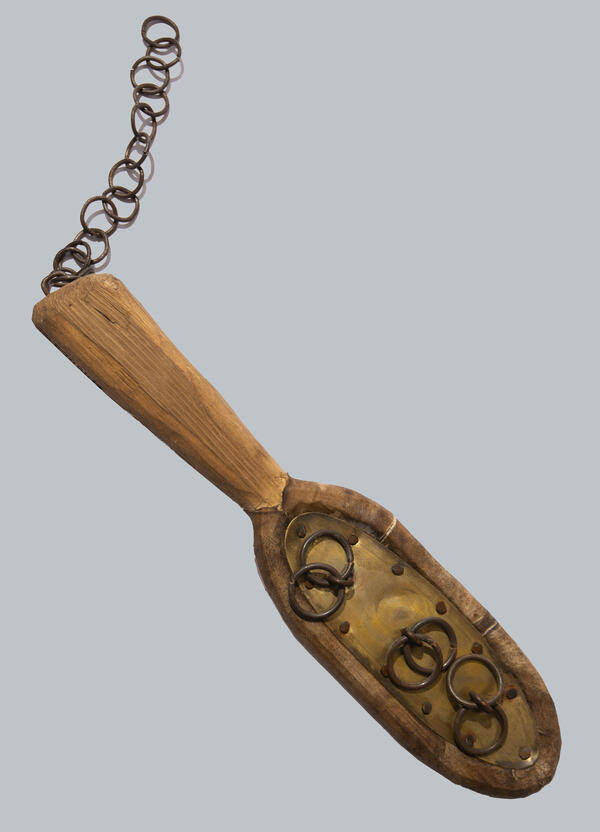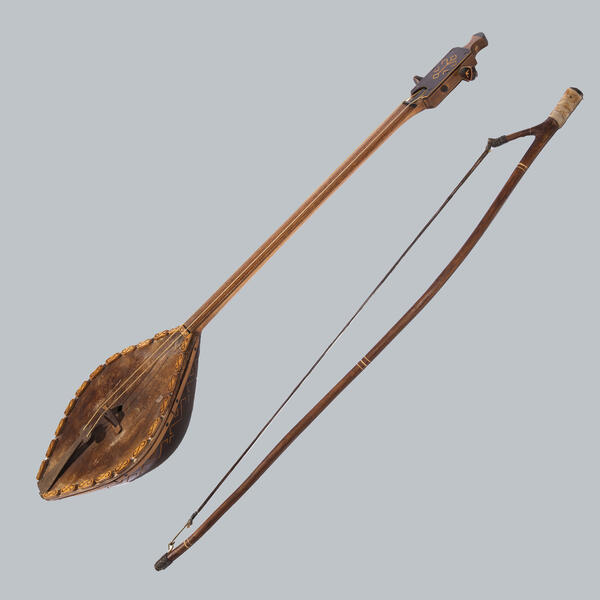The use of the rozhok (horn) for signaling by soldiers and hunters was mentioned in Russian songs and bylinas (epic poems) as early as the 10thcentury. The instrument was also depicted in old Russian images. Shepherds used a rozhok to call the sheep and to play simple melodies at leisure. In the late 17th — early 18thcentury, the rozhok became widespread in Russia.
The first rozhoks were made using animal horns. Later, they were made of conical wood pipes but retained their original name. Only the bell continued to be made of horn or tin. The main material for a rozhok was hard wood, birch, maple, or juniper. Musicians say that rozhoks of juniper have the best sound.
A piece of wood was split lengthwise, the two halves were carved out using a chisel and then bound together with birch bark. Five holes were bored on the front side and one more on the back. The pitch was controlled by changing the blowing strength. To seal the cracks and improve the sound, the instrument was moistened before use.
In the 19thcentury, Vladimir peasants became famous for their rozhok playing skills: they were invited to village festivals and city fairs, including those outside their native governorate. They even formed large ensembles which were called “choirs”.
In the mid-1870s, the peasant Nikolay Kondratyev formed an entire orchestra of self-taught rozhok players in the village of Mishnevo, Kovrov Uyezd (nowadays, the village belongs to the Kameshkovo District). The musicians learned most of their repertoire by memory and often improvised.
In 1883, Kondratyev’s orchestra played for the family of Emperor Alexander III in Peterhof; later, the artists visited Berlin and Paris, performed at the All-Russian Industrial and Art Exhibition in Nizhny Novgorod and All-Russian Trade Show in St. Petersburg. The next director of the choir after Kondratyev was Pyotr Pakharev.
The Barnaul musical instrument maker Alexander
Gnezdilov built the Vladimir rozhok according to the old technology, replacing
only the wood: the body is made of red wood, while the bell and mouthpiece are
made of black wood. The new instrument can be played in any key and can be used
as an orchestral instrument.



